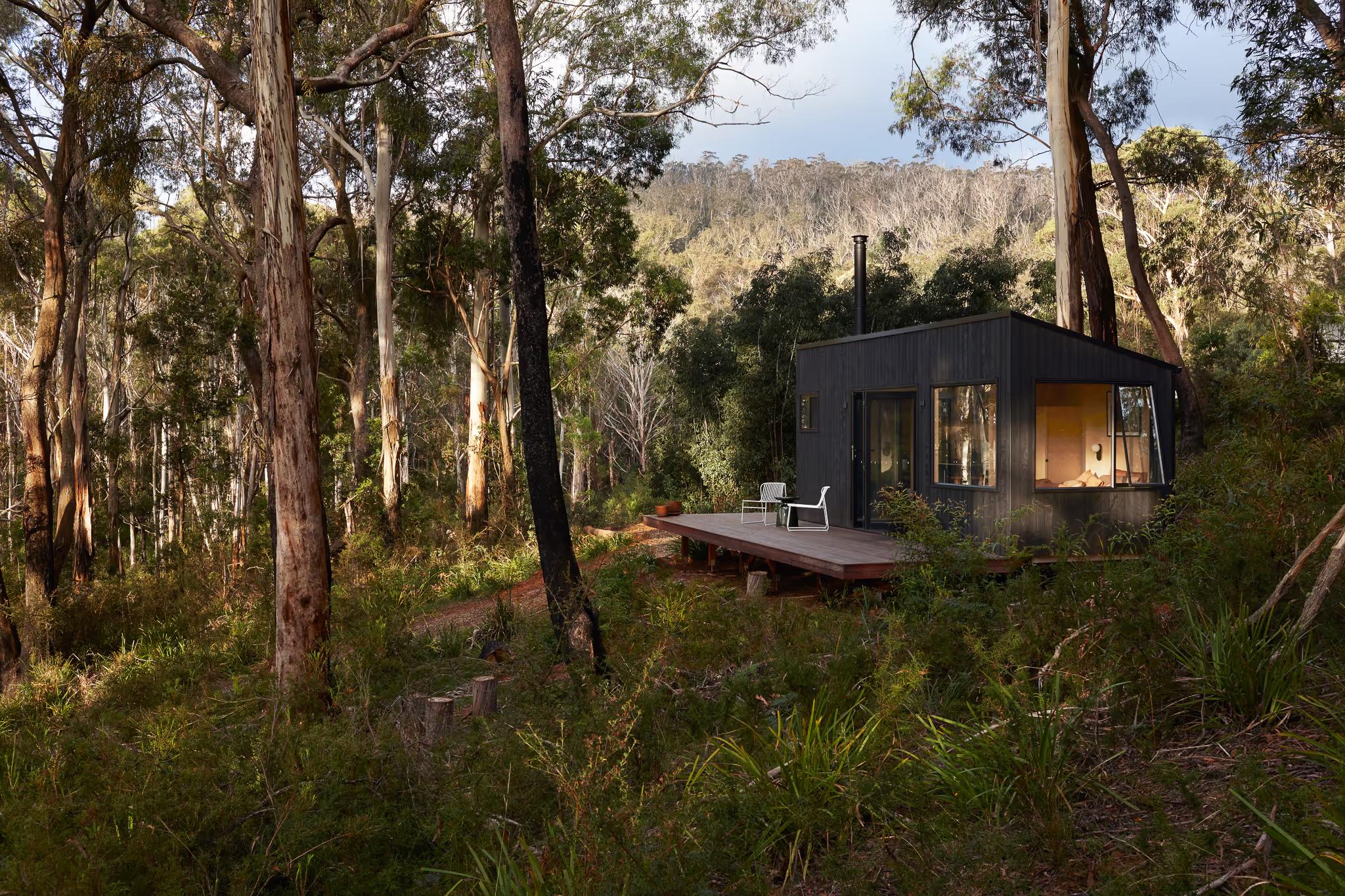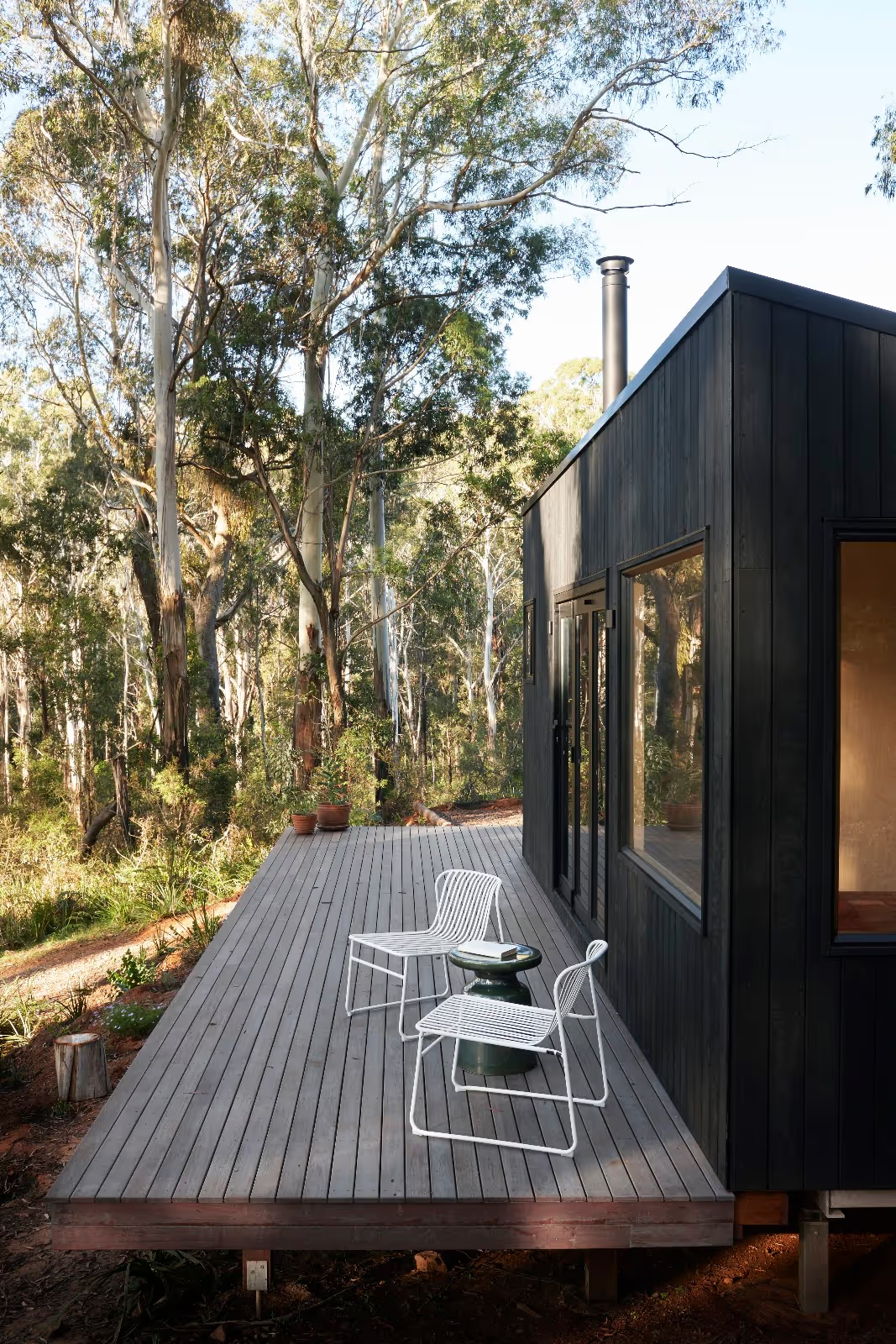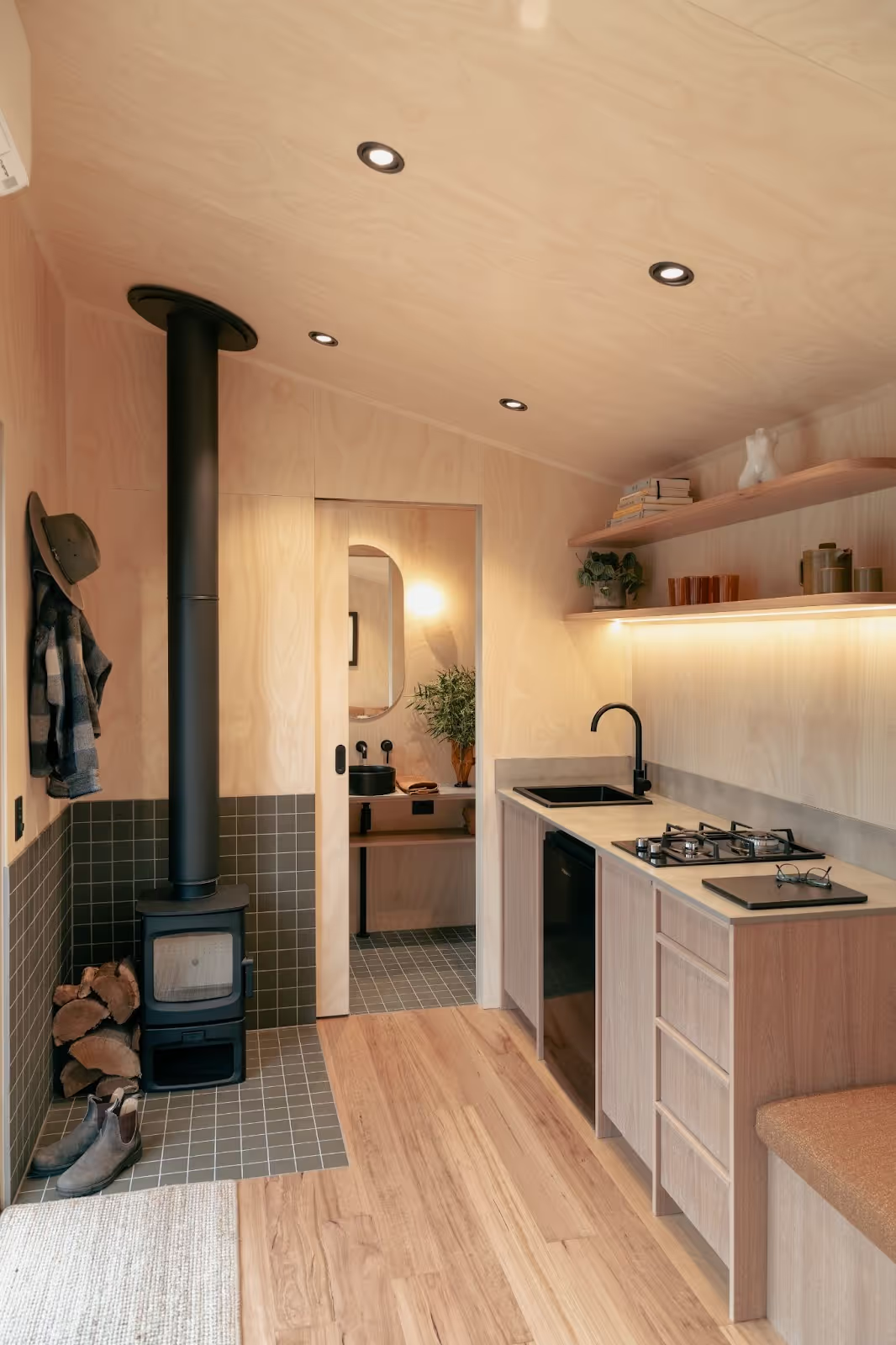Tiny Homes On Wheels | No Council Approval Needed

At Tall Tiny, we build our homes on wheels by design, not by compromise. This approach stems from our commitment to creating beautiful, functional living spaces that offer genuine freedom and flexibility.
The regulatory advantages of properly classified tiny homes on wheels allow us to deliver high-quality dwellings without the lengthy delays, costs, and restrictions associated with traditional construction. Our architectural approach to mobile dwellings means you get the aesthetic and quality of a premium home with the legal classification of a caravan—combining design excellence with practical advantages that permanent structures simply cannot match.
What Makes Tiny Homes on Wheels Unique
Tiny homes on wheels (THOWs) offer a distinctive housing solution by combining architectural design with mobility. Unlike traditional dwellings, these homes exist in a unique regulatory category that—when properly executed—allows placement without council development approval processes.
The key differentiator is the classification as a caravan rather than a permanent structure. This distinction fundamentally changes how these homes are regulated, allowing flexibility that permanent structures simply cannot match.
Legal Classification: Caravans Under NSW Regulations
In New South Wales, tiny homes that meet specific dimensional and design criteria can be classified as caravans under the Local Government (Manufactured Home Estates, Caravan Parks, Camping Grounds and Moveable Dwellings) Regulation 2021.
This classification is critical because:
- Caravans are considered non-permanent structures
- They can be placed on private property without development consent
- They remain exempt from many building codes that apply to permanent dwellings
The legal definition specifically covers "an enclosed, self-contained structure that is built on a chassis or frame and is designed to be used as a mobile home or living quarters when stationary."
VSB1 Compliance Requirements
To qualify as a caravan, a tiny home must comply with the Vehicle Standards Bulletin 1 (VSB1), which outlines the technical requirements for trailers with an aggregate trailer mass of 4.5 tonnes or less.
Key VSB1 requirements include:
- Maximum dimensions: 12.5m long (including drawbar), 2.5m wide, 4.3m high
- Weight limit: Under 4.5 tonnes aggregate trailer mass
- Roadworthiness: Must meet all road safety standards including braking systems, lights, and structural integrity
- Registration: Must be capable of registration as a trailer
At Tall Tiny, we design our homes to precisely meet these specifications, ensuring they maintain their caravan classification while maximizing livable space.
Certification Process
Obtaining proper certification involves several steps:
- Design compliance: Engineering certification confirming VSB1 standards are met
- Vehicle identification: Securing a Vehicle Identification Number (VIN)
- Roadworthiness inspection: Assessment by an authorized inspector
- Registration: Completing trailer registration with your state's transport authority
This process results in a legally recognized caravan that can be towed on Australian roads and placed on property without council approval for personal use.

Benefits of Mobility and Avoiding Council Processes
Choosing a tiny home on wheels provides several advantages:
Time Savings
- No DA process: Avoid 3-12 month council approval timelines
- Immediate placement: Install your home as soon as it arrives
- Rapid relocation: Change locations without selling or rebuilding
Financial Benefits
- No council fees: Save thousands on development applications
- No property tax increases: In many jurisdictions, moveable dwellings don't increase rates
- Investment flexibility: Relocate your asset as property markets change
Freedom and Flexibility
- Location independence: Move your home to follow work, family, or lifestyle
- Trial before commitment: Test different locations before permanent settlement
- Disaster readiness: Relocate quickly during bushfires or floods
State-by-State Regulatory Comparison
While the caravan classification offers advantages across Australia, regulations vary significantly between states:
New South Wales
- Classification: Explicitly recognized as caravans if meeting VSB1 standards
- Placement: Can be placed on property with an existing dwelling and occupied full-time
- Limitations: On vacant land, occupation limited to 60 days per year
Victoria
- Classification: Similar to NSW, recognized as caravans
- Placement: Some councils require permits for stays beyond 60 days
- Trends: Several councils have pilot programs expanding THOW acceptance
Queensland
- Classification: Recognized as caravans but with stricter occupancy rules
- Placement: Many councils limit stays to 2-4 weeks unless in designated areas
- Variations: Significant differences between council jurisdictions
South Australia
- Classification: Recognized as caravans but with varying interpretation
- Placement: Generally allowed with primary dwelling present
- Duration: Often limited to temporary occupation (definitions vary)
Western Australia
- Classification: Follows the Caravan Parks and Camping Grounds Act 1995
- Placement: Written approval required for occupancy beyond defined periods
- Requirements: Health and safety standards must be met
Tasmania
- Classification: Generally follows caravan regulations
- Placement: Subject to local planning schemes
- Trends: Some councils becoming more accommodating to tiny homes
Territories (ACT & NT)
- Classification: Recognized as caravans with territory-wide policies
Placement: Generally permitted with varying restrictions on duration
Common Misconceptions About Tiny Homes and Regulations
Misconception 1: "All tiny houses avoid council approval"
Reality: Only properly certified tiny homes on wheels classified as caravans avoid council approval. Permanent tiny homes on foundations require full development approval.
Misconception 2: "You can live in a THOW anywhere"
Reality: While placement doesn't require DA, occupation duration is regulated differently across jurisdictions, particularly on vacant land.
Misconception 3: "Any small structure on wheels qualifies as a caravan"
Reality: Strict VSB1 compliance is required, including engineering certification and proper registration.
Misconception 4: "Once registered, no other regulations apply"
Reality: Local health, safety, and amenity regulations still apply, including waste management requirements.
Misconception 5: "Councils can't regulate tiny homes on wheels at all"
Reality: While DAs aren't required, councils can still enforce other regulations regarding health, safety, and amenity.
FAQ Section: Legal Requirements
Q: Can I live in a tiny home on wheels full-time?
A: Yes, in NSW you can live in a tiny home on wheels full-time if it's placed on property with an existing dwelling. On vacant land, occupation is typically limited to 60 days per year.
Q: Do I need council approval to place a tiny home on my property?
A: In NSW, properly certified tiny homes on wheels classified as caravans don't require development approval for placement. However, local regulations regarding setbacks, health, and safety still apply.
Q: What's the difference between a tiny home requiring approval and one that doesn't?
A: The key difference is whether it's classified as a permanent structure or a caravan. Homes on foundations or those exceeding VSB1 dimensions require full development approval, while properly certified tiny homes on wheels don't.
Q: Can I connect my tiny home to utilities without council approval?
A: Basic connections to existing utilities on your property generally don't require approval. However, new service connections (particularly sewer) may require permits depending on your location. Always check with your local council.
Q: Can I rent out my tiny home without council approval?
A: Short-term rental regulations vary significantly by jurisdiction. While placement may not require approval, operating as tourist accommodation often requires additional permits.
Q: What happens if the council challenges my tiny home placement?
A: Having proper documentation is crucial. Keep your registration papers, compliance certificates, and evidence of VSB1 compliance accessible to demonstrate your home's caravan classification.
Q: Are there restrictions on where I can place my tiny home on my property?
A: Yes. Even without DA requirements, setbacks from boundaries, fire safety considerations, and access requirements still apply under various regulations.
Q: Can body corporates or strata schemes prevent tiny homes?
A: Yes. Private community bylaws, covenants, or strata rules may restrict or prohibit tiny homes regardless of their caravan classification.
Ready to Explore Your Options?
At Tall Tiny, we specialize in designing and building beautiful, high-quality tiny homes that comply with all VSB1 requirements, ensuring you can place your home without council approval processes. Our team guides you through certification and registration, making the process seamless.
Book a consultation to discuss your needs or visit our Blue Mountains display homes to experience our craftsmanship firsthand.




